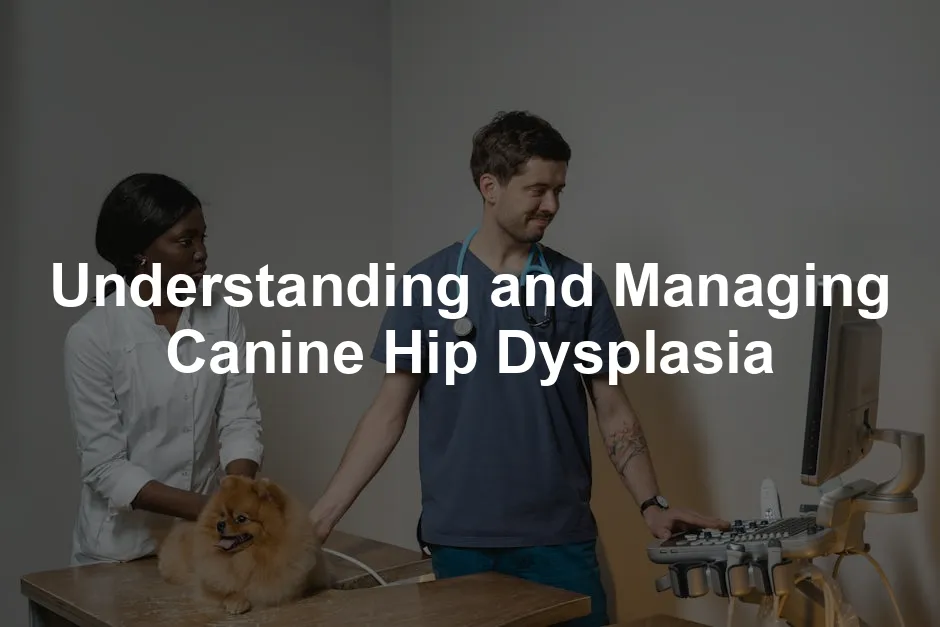Introduction
Canine hip dysplasia (CHD) is an all-too-common orthopedic issue, especially in large dog breeds. This condition occurs when the hip joint doesn’t develop properly, leading to instability and pain. If you’ve ever watched your dog struggle to climb stairs or catch a frisbee, you might have seen the telltale signs of hip dysplasia.
Genetic predisposition plays a significant role in CHD. Many breeds, such as German Shepherds and Labradors, are particularly prone to this ailment. The implications for your furry friend can be serious. From decreased mobility to chronic pain, this condition can severely impact a dog’s quality of life. It may even affect their mood and behavior, turning your playful pup into a couch potato.
Early detection is crucial. As a pet owner, knowing the signs of hip dysplasia can lead to timely intervention, improving your dog’s well-being. Management strategies can vary widely, from lifestyle changes to medical treatments. Understanding these options can help you keep your four-legged friend happy and healthy. So, let’s get into the nitty-gritty of what canine hip dysplasia really is!

What is Canine Hip Dysplasia?
Definition and Overview
Hip dysplasia is a genetic disorder where the hip joint’s ball and socket don’t fit together snugly. Imagine trying to balance a tennis ball on a saucer—it’s not going to end well! Over time, this misalignment causes wear and tear, leading to arthritis and joint pain. It can start as early as puppyhood but might not show symptoms until later.
The hip joint consists of two main parts: the femur (the leg bone) and the acetabulum (the hip socket). In a healthy joint, the ball of the femur fits snugly into the socket. However, in dogs with hip dysplasia, the socket may be too shallow, or the ball might be misshapen. This results in a loose and unstable joint, which can cause pain and discomfort during movement.
Causes of Hip Dysplasia
Hip dysplasia is primarily hereditary. Genetic factors contribute significantly, making some breeds more susceptible than others. Large breeds, including Rottweilers, St. Bernards, and Golden Retrievers, are often at a higher risk.
But it’s not just genetics at play—environmental factors also contribute. Rapid growth due to overfeeding or excessive exercise can exacerbate the condition. Puppies grow quickly, and if they gain weight too fast, it can put undue stress on their developing joints. Proper diet and moderate exercise are crucial during their growth phase. Being mindful of these factors can help reduce the risk of your pup developing hip dysplasia.
In summary, canine hip dysplasia is influenced by a mix of genetic predispositions and environmental conditions. Recognizing the signs early and managing your dog’s lifestyle can make a world of difference in their health.

Recognizing the Symptoms
Early Signs
Detecting canine hip dysplasia early can make a world of difference. Keep an eye out for these early signs:
- Decreased Activity: Your pup may seem less interested in playing fetch or chasing squirrels. If they prefer lounging over romping, it’s time to investigate.
- Trouble Rising: If your dog struggles to stand up after a nap, it could be a red flag. Watch for them taking longer than usual to rise.
- Change in Gait: Notice any hopping or swaying when they walk? This can indicate discomfort in their hips. They might also develop a peculiar “bunny hop” movement.
- Lameness: Look for signs of limping or favoring one leg. This could mean they’re experiencing pain in the affected hip.
- Reduced Range of Motion: If your furry friend has difficulty jumping, climbing stairs, or even getting in the car, it could signify hip issues.
These signs can start showing as early as four months old. However, some dogs may not exhibit symptoms until much later. To keep your dog happy, be vigilant and proactive.

Progression of Symptoms
As time goes on, hip dysplasia symptoms can worsen. Initially, your dog may seem a bit stiff after a good romp, but don’t let that lull you into complacency. If left unmanaged, the condition can lead to painful arthritis.
- Increased Pain: Over time, the instability in the hip joint causes pain. Your dog may groan or whine when moving, especially during or after exercise.
- Loss of Muscle Mass: Due to reduced activity levels, you might notice thinning muscles in the hind legs. This is their body’s way of compensating for joint pain.
- Development of Arthritis: Eventually, hip dysplasia can lead to osteoarthritis. This degenerative condition can significantly limit your dog’s mobility and comfort.
If you notice any of these symptoms, don’t wait! Consult your veterinarian promptly. Early intervention can make a substantial difference in your dog’s quality of life.
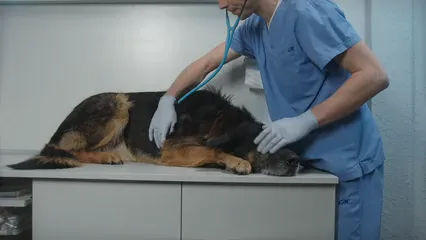
Diagnosis of Hip Dysplasia
Veterinary Assessment
If you suspect hip dysplasia, a trip to the vet is essential. Your veterinarian will begin with a thorough physical examination. They’ll check for signs of pain, stiffness, or alterations in your dog’s gait.
- Physical Examination: The vet will observe your dog walking and use manipulation techniques to assess hip joint stability. If your dog flinches or shows discomfort, take note—this is significant.
- X-rays: Radiographs are the gold standard for diagnosing hip dysplasia. They give a clear picture of the joint’s structure and any potential damage. Your vet might recommend sedation to capture the best images.
These initial assessments are crucial for determining the extent of the condition.
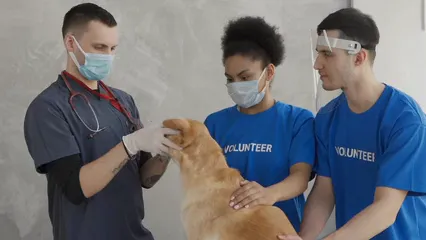
Testing Methods
Several standardized tests can help confirm hip dysplasia:
- Ortolani Test: Often performed during the vet visit, this test checks for joint laxity. The vet will gently manipulate the hip to see if the femur slips out of the socket, indicating looseness.
- OFA (Orthopedic Foundation for Animals): This evaluation is generally performed on dogs aged two years or older. The OFA assesses hip conformation and assigns a score.
- PennHIP: This method can be performed as early as four months of age. It measures hip joint laxity and evaluates the risk of developing osteoarthritis in the future.
Understanding these methods can empower you as a pet owner. Knowing what to expect can ease the process and ensure your furry friend gets the best care possible.
Treatment Options
Understanding the treatment options for canine hip dysplasia (CHD) is crucial for pet owners. This condition can be managed through both non-surgical and surgical approaches, depending on severity and individual circumstances.
Non-Surgical Treatments
Non-surgical options often focus on lifestyle changes and medical management. Here are some key strategies:
- Lifestyle Changes: Adjusting your dog’s daily routine can significantly improve their quality of life. Low-impact exercises like walking or swimming can keep them active without stressing the joints. Avoid high-impact activities that could exacerbate their condition.
- Weight Management: Maintaining a healthy weight is paramount. Extra pounds mean extra pressure on those delicate hip joints. A balanced diet tailored to your dog’s needs can help keep their weight in check. Consult your veterinarian for advice on appropriate portion sizes and dietary options.
- Medications: Nonsteroidal anti-inflammatory drugs (NSAIDs) are often prescribed to manage pain and inflammation. Joint supplements, such as glucosamine for dogs and chondroitin, can also support joint health and alleviate discomfort. Always discuss medication options with your vet to ensure they’re suitable for your dog’s specific needs.
For dogs suffering from joint pain, consider exploring best supplements for dogs with joint pain and arthritis to alleviate discomfort and improve mobility.
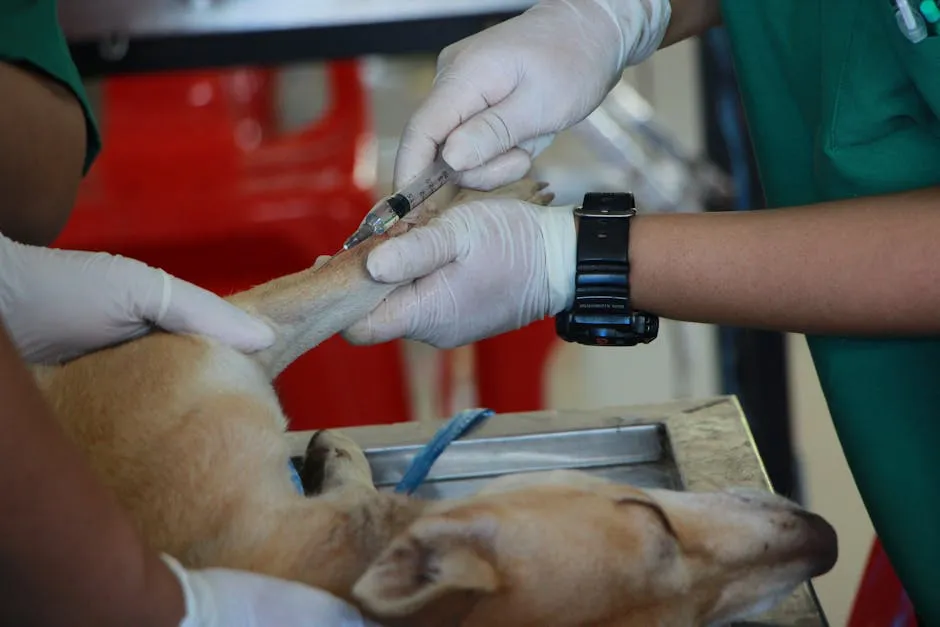
Surgical Treatments
When non-surgical treatments fall short, surgical options become an important consideration. Here’s a closer look at some common procedures:
- Total Hip Replacement (THR): This procedure involves replacing the entire hip joint with an artificial implant. It’s typically recommended for dogs with severe hip dysplasia and significant pain. Success rates are high, often resulting in a remarkable improvement in mobility.
- Triple Pelvic Osteotomy (TPO): Ideal for younger dogs without severe arthritis, TPO involves cutting and repositioning the pelvis to improve hip joint stability. This surgery aims to prevent the onset of arthritis while enhancing the dog’s quality of life.
- Femoral Head Ostectomy (FHO): This procedure removes the head of the femur to eliminate pain caused by hip dysplasia. While it doesn’t replace the joint, it can result in a functional “false joint” and improve mobility. It’s often considered for older dogs or those with advanced arthritis.
Before making any decisions, consult with a veterinarian who can evaluate your dog’s specific condition and help create a personalized treatment plan.
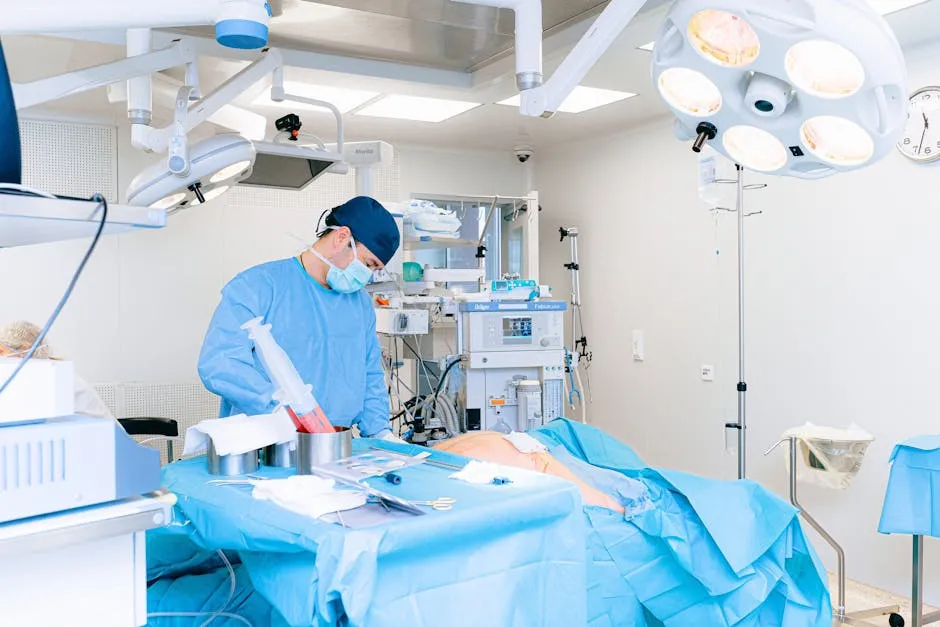
Recovery Process
After surgical treatment, the recovery process is crucial. Here’s what to expect:
- Post-Operative Care: Following surgery, your dog will require careful monitoring. Ensure they have a comfy, quiet space to rest. Follow your vet’s instructions regarding medication and wound care diligently.
- Gradual Rehabilitation: Rehabilitation is essential for returning your dog to their usual activities. This may involve physical therapy, which can help strengthen muscles and improve flexibility. Your veterinarian will guide you on when and how to safely reintroduce exercise.
- Long-Term Management: Recovery can take several months, so patience is key. Regular follow-up appointments with your veterinarian will help monitor your dog’s progress and make any necessary adjustments to their care plan.
By understanding these treatment options and the recovery process, you’ll be better equipped to support your dog through their journey with hip dysplasia. With the right approach, many dogs can lead happy, active lives despite this condition.

Managing Canine Hip Dysplasia
Lifestyle Adjustments
Creating a comfortable environment for your dog is crucial. Start by evaluating your home for potential hazards. Non-slip surfaces are a must! Slippery floors can be a real pain (literally) for dogs with hip dysplasia. Consider adding rugs or mats to help your pup maintain their footing.
Orthopedic beds are another game-changer. These beds provide the necessary support for achy joints. Look for options with memory foam that contours to your dog’s body. And let’s face it, who doesn’t love a cozy spot to snooze? Check out this amazing Orthopedic Dog Bed for your furry friend!
Also, consider ramping up your dog’s comfort level with stairs and vehicles. Ramps can make a world of difference, allowing your furry friend to get in and out without straining their hips. If your dog is a couch potato, get ready for some serious snuggle sessions!
Exercise and Nutrition
Exercise is essential, but not all workouts are created equal. Low-impact activities are best for dogs with hip dysplasia. Swimming is a fantastic option! It helps build muscle without putting too much stress on the joints. Aim for two 20-minute swimming sessions a week; your dog will love it!
Walking is also beneficial. Short, frequent walks are better than long treks. Keep the pace relaxed. Remember, it’s not a race; it’s more like a leisurely stroll through the park!
Now, let’s talk nutrition. Keeping your dog at a healthy weight is vital. Extra pounds mean extra pressure on those delicate hips. Consult your vet for a tailored diet plan. Incorporate joint supplements like dog treats for joint health, which can help reduce inflammation and support joint health.

Home Care Strategies
Home care is where you become your dog’s very own physical therapist. Gentle massages around the hip joints can relieve tension and promote blood circulation. Just be sure to watch for any signs of discomfort—nobody wants to be the reason their dog gives them the side-eye!
Physical therapy is another beneficial option. Consult with a veterinarian or a certified canine rehabilitation therapist. They can guide you through therapeutic exercises that strengthen your dog’s muscles and improve flexibility. You might even want to consider some dog massage tools to ease those sore muscles!
Also, consider using heat therapy. A warm compress can soothe sore muscles and improve circulation. Just ensure it’s warm, not scalding hot! And let’s not forget the power of rest. Make sure your dog has a cozy, quiet place to relax after their activities. After all, they deserve a little pampering, don’t you think?
By making these adjustments, you can significantly enhance your dog’s quality of life. They might not be able to leap like a gazelle, but with your love and support, they can still enjoy life to the fullest.
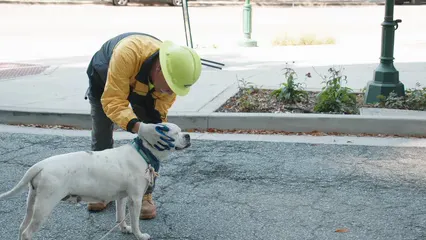
Prevention Strategies
Responsible Breeding
Prevention starts before you even bring a pup home! Responsible breeding is paramount in reducing the incidence of canine hip dysplasia. When selecting a breeder, always ask about their health screening practices. Reputable breeders should perform tests on both the mother and father for hip dysplasia.
Look for breeders who are part of breed clubs that emphasize health testing. They should be able to provide documentation proving their breeding dogs have good hip scores. This ensures that you’re not just getting a cute puppy but also one with a better chance of a healthy life.
Educating yourself on the genetic predispositions of certain breeds is also beneficial. Breeds like German Shepherds, Golden Retrievers, and St. Bernards are more likely to develop hip dysplasia. Understanding these risks can help you make informed decisions.
By prioritizing responsible breeding, you can help ensure that future generations of dogs lead healthier, happier lives. Remember, a little diligence goes a long way in the quest for a furry friend!
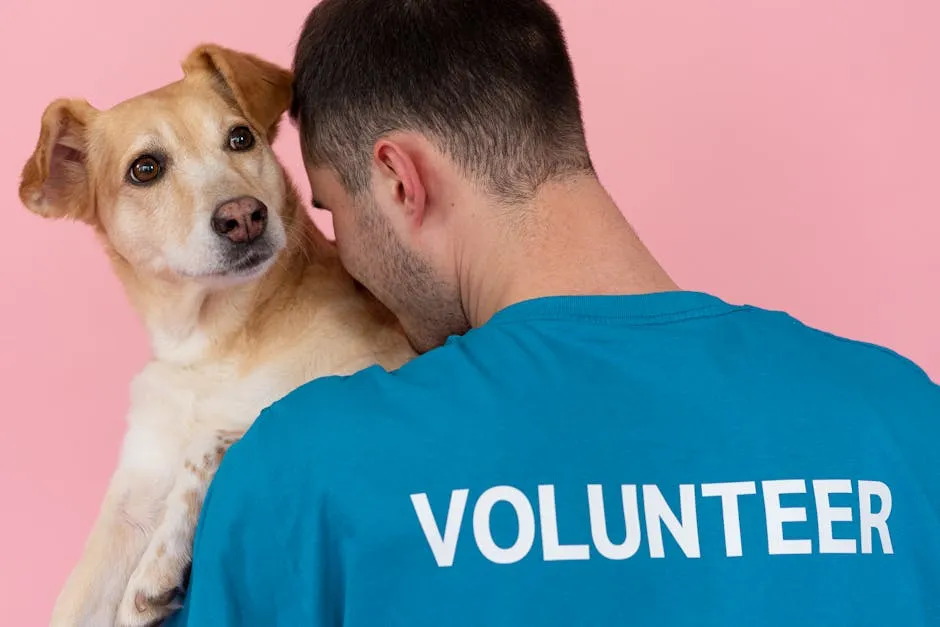
Nutrition and Growth Management
Managing your dog’s growth rate and weight is vital in preventing and alleviating hip dysplasia. Proper nutrition and exercise play crucial roles in this endeavor.
Start with a balanced diet tailored to your dog’s specific needs. High-quality dog food is a must! Look for options rich in essential nutrients, such as protein, omega fatty acids, and glucosamine. These ingredients support healthy joint development and overall growth. Avoid overfeeding! Extra pounds can exacerbate hip issues. Consult with your veterinarian to determine the right portion sizes for your dog based on their age, breed, and activity level.
Exercise is equally important. However, it’s essential to strike the right balance. Puppies, especially large breeds, grow rapidly. Too much high-impact exercise can lead to joint stress. Instead, opt for low-impact activities like walking or swimming. These gentler forms of exercise help build muscle without putting undue pressure on developing joints. Aim for regular, shorter sessions rather than one long workout. Your furry friend will appreciate the consistency, and their joints will thank you!
Incorporate structured playtime and mental stimulation into their routine. Puzzle toys or training exercises can keep their minds engaged while encouraging physical activity. A well-rounded approach helps maintain a healthy weight and promotes overall joint health. Keep an eye on your dog’s growth rate. If they seem to be growing too quickly, consult your vet for adjustments to their diet and exercise plan.
By managing nutrition and exercise effectively, you’re not just investing in your dog’s physical health; you’re also enhancing their quality of life. And who wouldn’t want a happy, active pup that can run without a hitch?
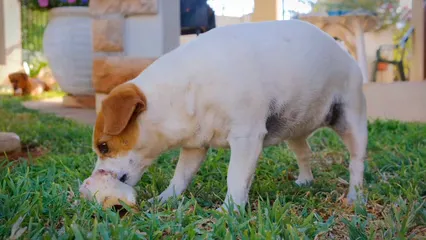
Conclusion
Understanding and managing canine hip dysplasia is crucial for the well-being of your furry friend. This common orthopedic issue can significantly impact a dog’s quality of life. From recognizing early signs to implementing effective treatment strategies, proactive care is essential.
Key points include the importance of proper nutrition and weight management. A balanced diet and regular, low-impact exercise are vital for maintaining joint health. Lifestyle adjustments, like creating a comfortable home environment, can also enhance your dog’s comfort.
Consulting with your veterinarian will provide tailored advice to best meet your dog’s needs. Regular check-ups can help monitor their condition and adjust management strategies as needed.
Stay informed and proactive in your dog’s health care. With the right approach, many dogs can lead happy, fulfilling lives despite the challenges posed by hip dysplasia. Remember, your efforts not only improve their physical health but also enrich their emotional well-being. Let’s keep those tails wagging!

Frequently Asked Questions (FAQs)
What breeds are most prone to hip dysplasia?
Large breeds, including German Shepherds, Golden Retrievers, and Rottweilers, are at higher risk for hip dysplasia due to genetic predisposition. However, smaller breeds can also be affected, albeit less frequently.
Can hip dysplasia in dogs be cured?
While there is no definitive cure for hip dysplasia, early diagnosis and proper management can alleviate symptoms significantly. Treatments may include medication, dietary adjustments, and exercise modifications.
What are the non-surgical treatment options for hip dysplasia?
Non-surgical options include weight management, low-impact exercise, physical therapy, and joint supplements. Medications such as NSAIDs may also help manage pain and inflammation.
How can I prevent my dog from developing hip dysplasia?
Prevention strategies include selecting reputable breeders who screen for hip dysplasia, ensuring a balanced diet, and maintaining a healthy weight. Avoid excessive exercise during the growth phase of large breed puppies.
When should I consider surgery for my dog’s hip dysplasia?
Surgery may be necessary if non-surgical treatments prove ineffective and your dog experiences severe pain or mobility issues. Consult your veterinarian to determine the best course of action based on your dog’s individual situation.
Please let us know what you think about our content by leaving a comment down below!
Thank you for reading till here 🙂
All images from Pexels

